Simgot LC7 Review
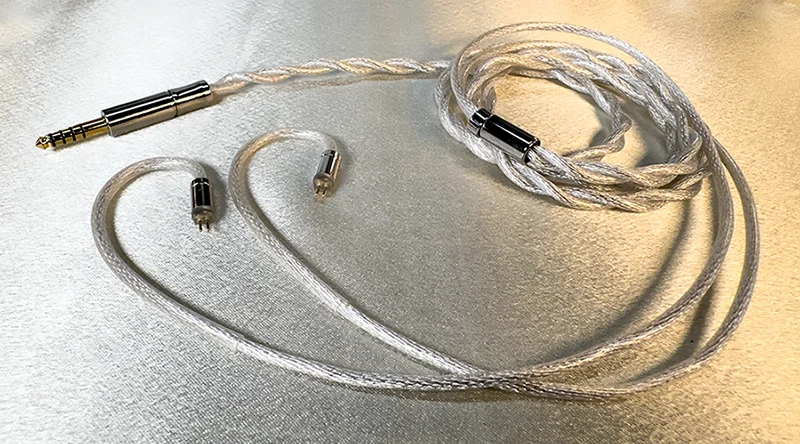
The Simgot LC7 is a fairly beefy 18AWG two wire combination of OFC & SPC wire conductors, with a modest price of USD $69.
The cable boasts a total of 732 individual cores, so there’s quite a lot of metal here which should in theory conduct electrons very effectively. I’ve always found thicker & heavier cables deliver better IEM performance, though there’s often an ergonomic price to be paid.
Simgot sent me the LC7 in exchange for a review and it’s the first of their cables I’ve tried, so I’ve no idea what to expect… at first glance it certainly looks attractive if nothing else!
Packaging
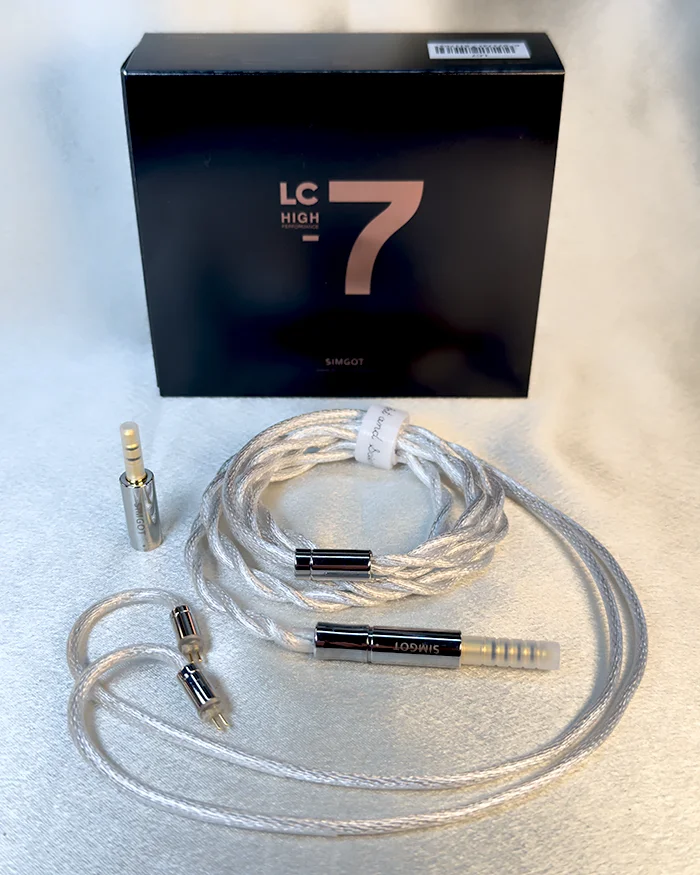
Arriving in a fairly minimalist cardboard box, the LC7 is actually a modular cable that’s supplied with both 4.4mm & 3.5mm plugs, and a small plastic cable tie.
It’s a fairly spartan package but I have no issues with it given the LC7 is only USD $69.
Ergonomics
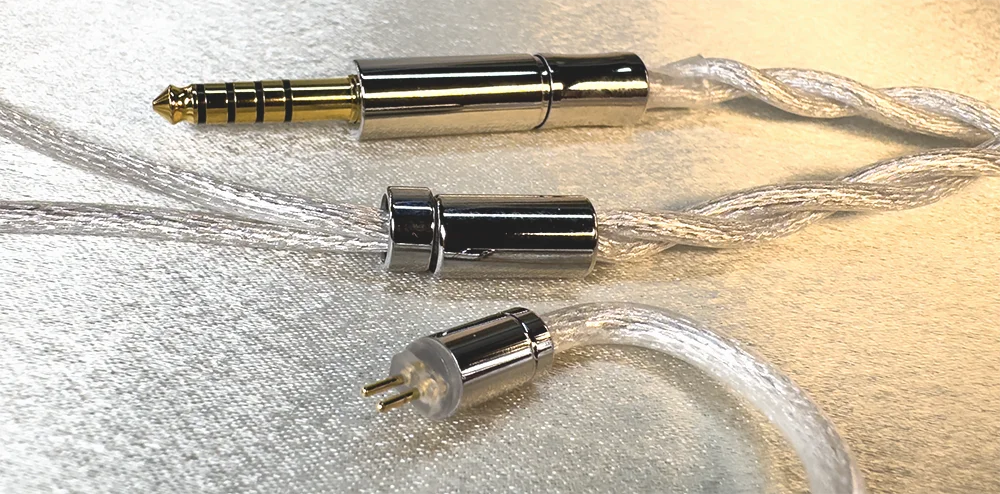
Weighing in at a middleweight 44 grams, the LC7 hits the sweetspot of being substantial enough to (hopefully) deliver great performance, whilst remaining acceptably light & flexible.
The soft PVC insulation helps improve comfort, and the cable drapes nicely without stiffness being an issue. There’s no moulded earhooks which I find is the most comfortable approach, so I rate comfort as very good overall. It also helps that the Y-split is extremely light.
In terms of hardware the plug, splitter & 2pin connectors are fairly utilitarian, but there’s a pleasingly minimalist appearance here without them coming across as cheap.
Sound Performance
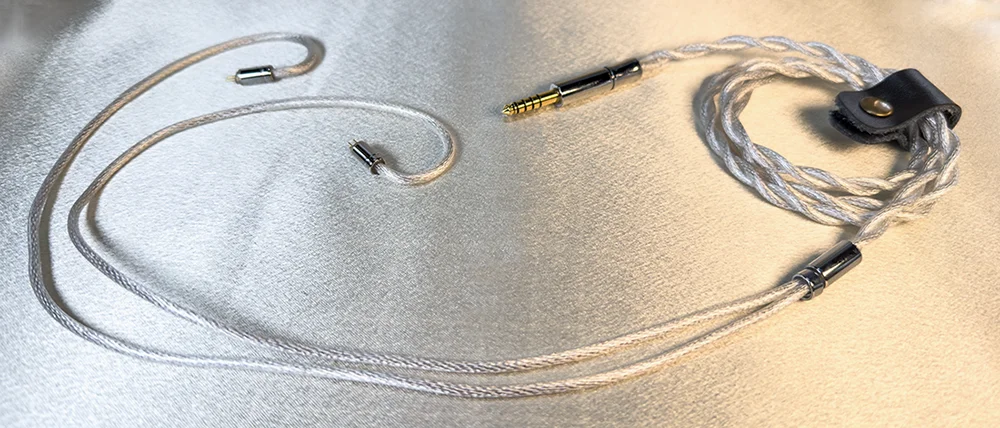
Despite being the lowest-cost cable in this roundup, you wouldn’t know it based on performance.
Bass is one area I find the LC7 may not improve an IEM’s performance quite as much as the other cables, whereas the midrange is where the LC7 really shines – bringing greater focus & emphasis to vocals on all IEMs I test it with, even enhancing detail throughout the mid frequencies in the process. Conversely treble isn’t accentuated terribly much, so you can safely pair it with brighter IEMs.
I’ve also found the LC7 is very good at growing the soundstage to give your earphones a larger, more spacious presentation.
Mostly I find this is the perfect cable to ‘correct’ V-shaped IEMs by bringing vocals forward, as one of my pet-hates is budget V-shaped earphones with weak midranges that position voices annoyingly far away – to some extent the LC7 can solve that common issue.
IEM Impressions

Simgot EA1000 – 1xDD 1xPR (USD $219)
I’m not sure if Simgot tuned the LC7 for the EA1000, but it feels like they did. If you own an EA1000 I strongly recommend picking one up because it’s obvious the synergy between them is terrific.
In this impressive pairing the vocals are shifted forward, and the midrange gains greater resolution to reach very impressive levels. Note weight and overall sense of heft is improved, which may be influenced by a greater emphasis on the lower midrange. Imaging is also that little bit more defined, and the LC7 + EA1000 combo is one I can listen to for hours without fatigue with great satisfaction.
ISN EST50 – 2xBA, 1xDD, 2xEST (USD $449)
This was another impressive pairing with the EST50s’ stage growing wider & becoming more spherical, as opposed to flatter on the stock S8 cable. However there’s a slight sense of diffuseness as well.
Vocals are also brought forward which helps correct the EST50’s V-shaped tuning and midrange resolution is increased in the process.
Penon Turbo – 6xBA (USD $549)
I’m not quite as keen on this pairup. The Turbos’ stage deepens but doesn’t widen, and though I detect a little more midbass there isn’t the sense of sub bass improvement I was hoping for.
Again the midrange is given greater emphasis and note weight increases, and I feel like the tuning is a bit more musical now with a little more groove, though the stock cable has slightly brighter treble performance which I prefer given the Turbos are relatively dark to begin with.
Conclusion
At just USD $69 the Simgot LC7 is a no-brainer if your IEMs require more midrange body & emphasis.
Comfort is perfectly decent and it doesn’t look or feel cheap, yet performance improvements are well within the realm of being easy to hear compared to a lot of cables out there.
This isn’t your typical copper cable that’s going to strengthen the midrange with the caveat of adding a ton of extra warmth that may be too much to handle – the LC7 strikes a nice balance between maintaining neutrality & adding an increased sense sense of gravitas.
Introduction & Test Setup
Simgot LC7 Review
NiceHCK FirstTouch Review
NiceHCK DragonScale Review
Penon ASOS Review
Cable Roundup Summary

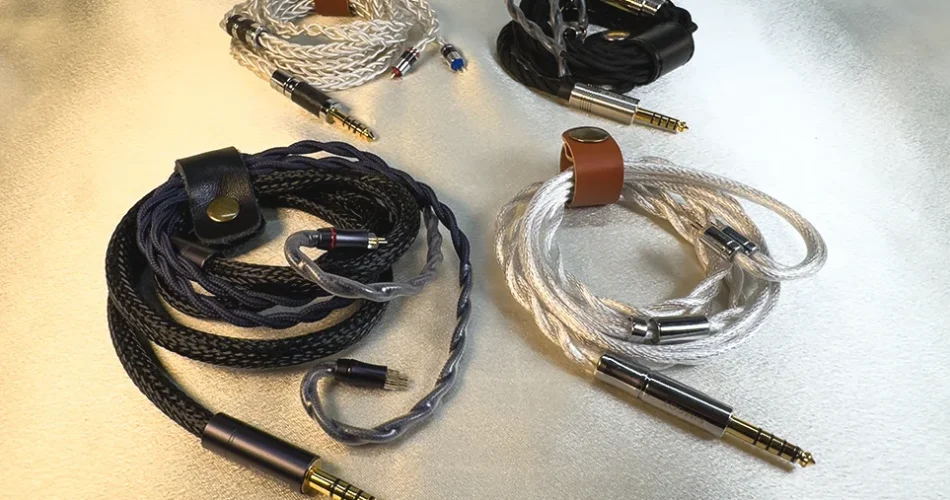
Comments